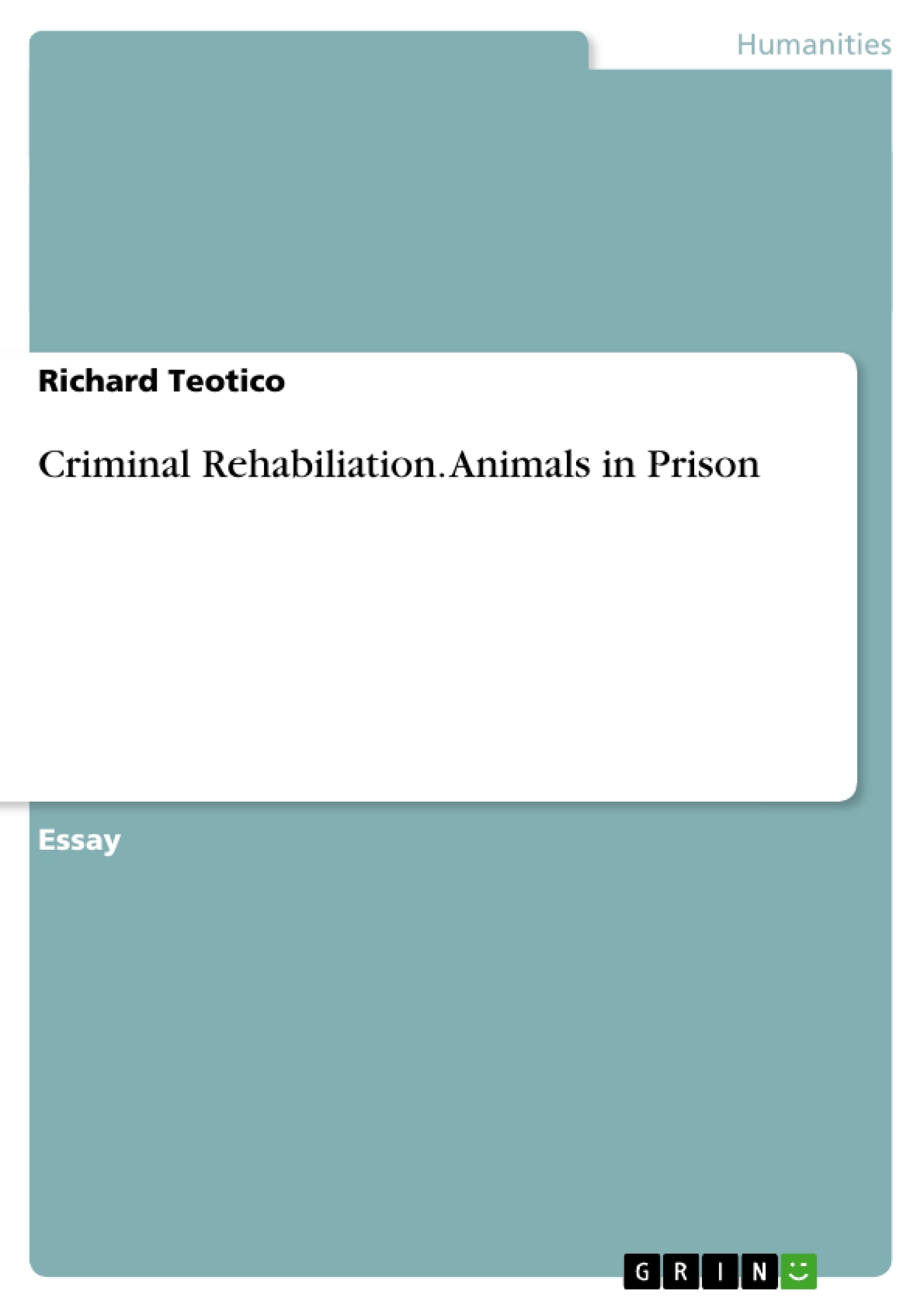Modern society has always been fascinated with criminal activity, it floods our newspapers, serves as a plot for shows, movies, games, and is even used by political parties to push social policies. However, once the perpetrators of crime are placed in prison, it is as if society turns a blind eye. In an ironic twist of fate, incarcerated offenders are often met with an environment which further propagates future deviant behaviour (Steiner & Wooldredge, 2008).
While many believe that prison is intended to serve as a form of punishment, it is often overlooked that many offenders will eventually be re-introduced into society. So while prison does not have to serve as a proverbial “bed and breakfast,” proper rehabilitative measures need to be taken in an attempt to mitigate the implications of aggressive temperaments and poor behavioural controls – which are often linked with crime (Sprinkle, 2008).
This paper will examine one questionable form of prison rehabilitation program, the use of animals as a tool in workshops to encourage pro-social behaviour and whether this program will lessen the rate of inmate on inmate victimization within the prison setting. Victimization for this study is intended to include: both sexual and physical assault, robbery, threats, extortion, and theft.
Animals in Prison
Introduction
Modern society has always been fascinated with criminal activity, it floods our newspapers, serves as a plot for shows, movies, games, and is even used by political parties to push social policies. However, once the perpetrators of crime are placed in prison, it is as if society turns a blind eye. In an ironic twist of fate, incarcerated offenders are often met with an environment which further propagates future deviant behaviour (Steiner & Wooldredge, 2008).
While many believe that prison is intended to serve as a form of punishment, it is often overlooked that many offenders will eventually be re-introduced into society. So while prison does not have to serve as a proverbial “bed and breakfast,” proper rehabilitative measures need to be taken in an attempt to mitigate the implications of aggressive temperaments and poor behavioural controls – which are often linked with crime (Sprinkle, 2008).
This paper will examine one questionable form of prison rehabilitation program, the use of animals as a tool in workshops to encourage pro-social behaviour and whether this program will lessen the rate of inmate on inmate victimization within the prison setting. Victimization for this study is intended to include: both sexual and physical assault, robbery, threats, extortion, and theft.
With many prisons suffering from financial constraints and general policy concerns regarding animals, comes the difficulty of introducing programs such as this. However, if this research is successful in correlating animal rehabilitation programs and reduced prison victimization, one may infer that the prison subculture will change into an environment that encourages offenders to create positive bonds, become more responsible, respectful, disciplined, and most importantly, increase their receptiveness towards successfully functioning in modern society.
Literature
Children and Crime
At a young age, many children are attributed to hedonistic approaches of obtaining material possession and self worth at the expense of others. While this is often countered through social development, predominantly parenting and institutionalization, many older offenders are often linked with regressed childhood behaviour (Sprinkle, 2008). Through understanding this ideology, society may take the appropriate steps of creating centralized programs hoping to address these issues.
Offenders and Animals
One study examined commonalities between violent offenders and discovered a history of animal abuse during childhood (Sprinkle, 2008). Supporting evidence concludes that offenders involved with animal abuse as children, were approximately five times more likely to have violent criminal records than non-animal abusing offenders (Barnes et al., 2006). Through this, it is reasonable to believe people that engage in animal abuse show little interest over the harm they inflict upon others, a strong precursor to deviant behaviour (Sprinkle, 2008).
Additionally, research has shown a correlation between owners of “aggressive” breeds of dogs and an increased number criminal convictions compared to owners of low-risk dogs. Findings concluded that owners of aggressive dogs were often associated with drugs, alcoholism, domestic violence, firearms possession and involvement in child abuse (Barnes et al., 2006).
[...]
- Quote paper
- Bachelor of Arts Criminology and Psychology Richard Teotico (Author), 2008, Criminal Rehabiliation. Animals in Prison, Munich, GRIN Verlag, https://www.grin.com/document/230467
-

-

-

-
Upload your own papers! Earn money and win an iPhone X. -

-
Upload your own papers! Earn money and win an iPhone X. -

-
Upload your own papers! Earn money and win an iPhone X. -

-
Upload your own papers! Earn money and win an iPhone X. -

-
Upload your own papers! Earn money and win an iPhone X.

